Humans are descended from tree-dwelling omnivores that evolved a bipedal gait and became plains-dwelling hunter-gatherers. They bear live young and have a two-sex reproductive system similar to centaurs, with an inseminator and gestator sex. Due to the Pleistocene extinction event, they only have one remaining natural species in their genus. However, their fixation on genetic modification has created new human species, colloquially referred to as GMH (genetically modified humans).
Most of these species were originally created by the designer baby industry, or by scientific communities to create humans hardier to the conditions of space travel and a changing Earth. “Humans” are thus described as a genus of animals, like avians. Although many GMH are unique and reproductively incompatible with any other humans, some GMH are created in compatible groups large enough to form stable reproductive populations, referred to as clades. Some of these GMH clades are also genetically unisex, unlike typ unisex humans, who undergo elective surgery to produce both eggs and sperm.
I want to see naked peopleContent warning: nudity
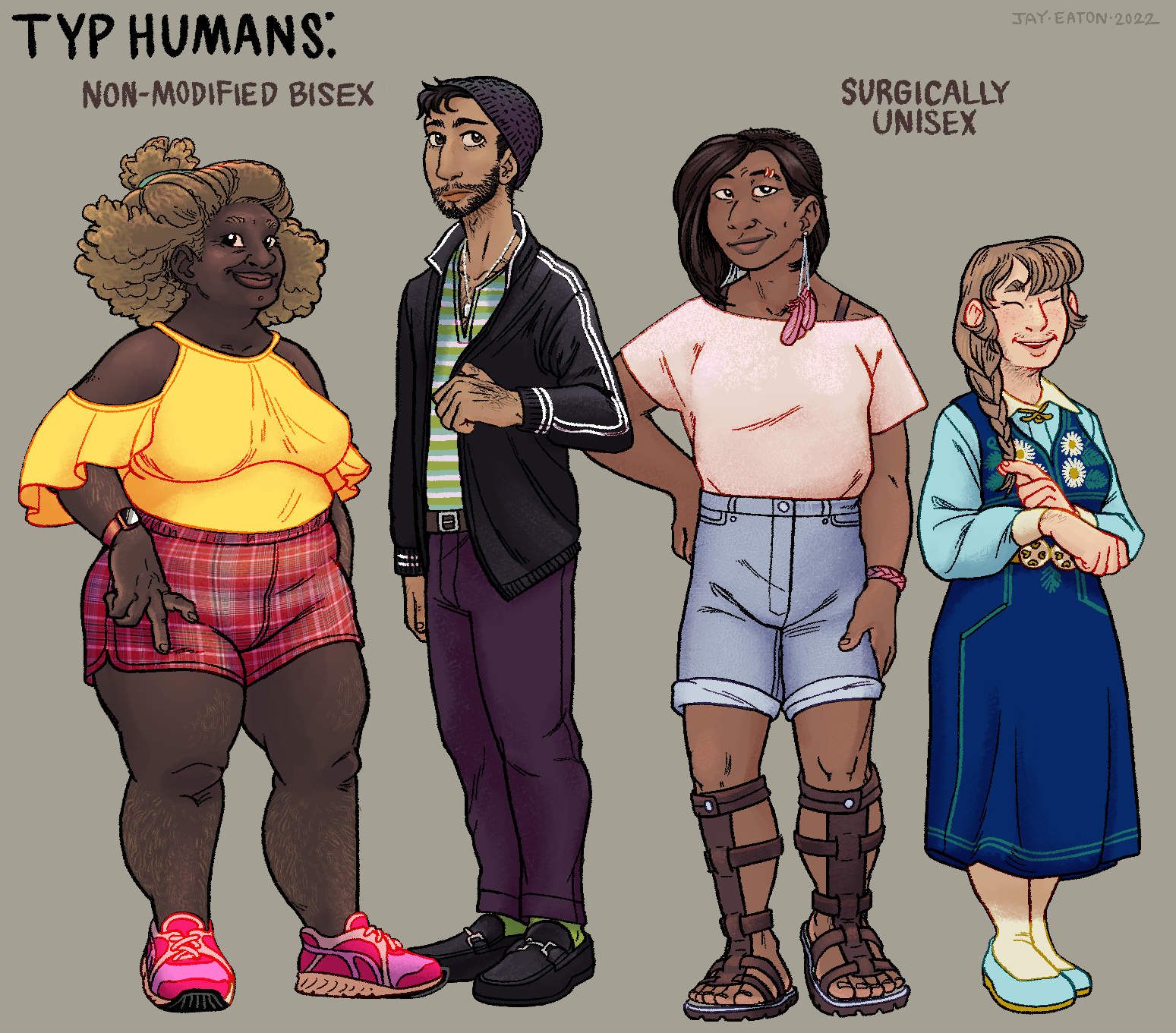
Typ humans are the largest human genepool, and the genepool that includes non-modified humans (which you are, presumably). Barring natural variation, most sexually mature humans either produce eggs and have a womb, or produce sperm. However, there are a number of typ humans who undergo elective surgery as adults to become unisex, i.e. able to produce both sperm and eggs. Surgically unisex humans vary a lot in morphology depending on the aesthetic preference of the individual, but they tend to have a blend of the typical physiological traits associated with the basal sexes.
Unisex humans are a distinct category from intersex humans; who are born with chromosome patterns, gonads, or genitals that don't align with the typical two categories of the bisex system. Typ intersex humans are not considered unisex unless they undergo surgical transition.
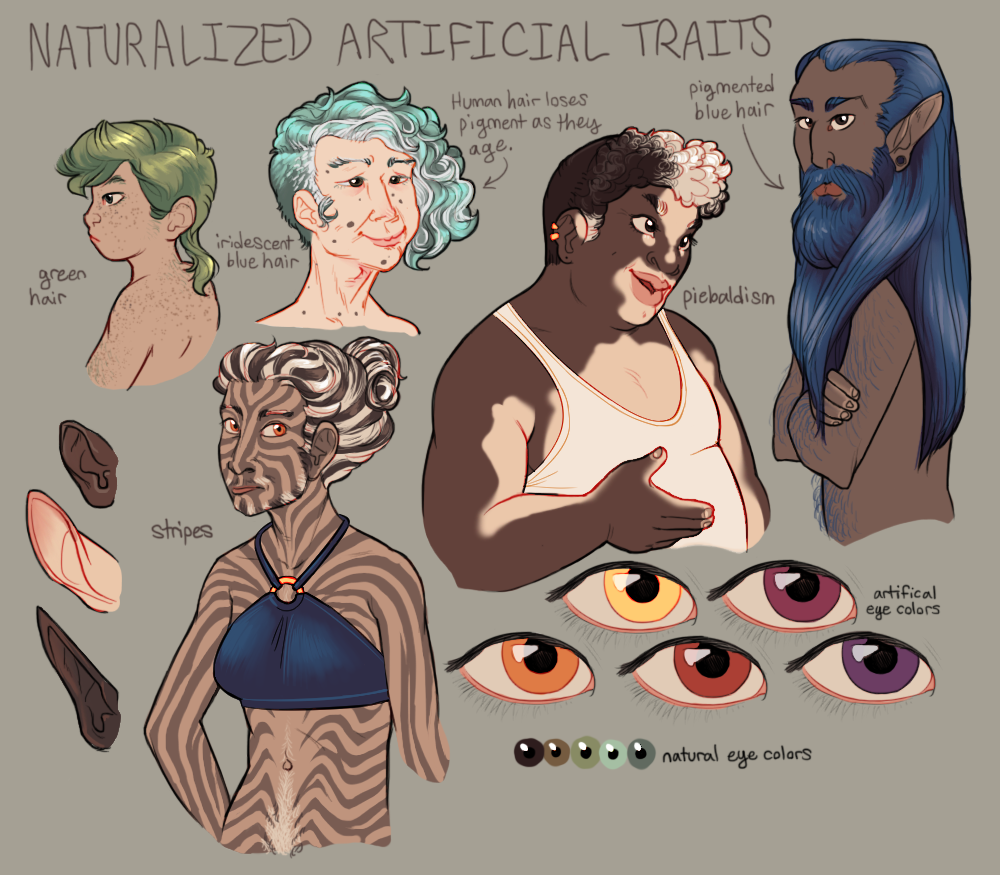
originally drawn 9/26/15
Humans’ self modification does not end with their sexual traits. Many wealthy humans will commission natal labs to alter their children's genetics in ways that don’t interfere with their offspring’s ability to reproduce with other typ humans. Originally novel artificial traits such as patterned or vividly colored skin, pointed ears, fur-like body hair, yellow-red-purple spectrum irises, and purple-blue-green spectrum hair color have become endemic to portions of the human population and can be inherited through normal genetic means.Typ people with aesthetic artificial traits are not usually classified as GMH for the same reason a non-modified human wouldn’t be classified as GMH for undergoing routine gene therapy. The distinction is entirely constructed, since all of them have undergone some level of genetic modification.
The inevitable discourse about where biomodded humans fall under these labels is divisive. Some biomodders who belong to the typ human genepool argue that they fall under the category of GMH because of the amount of gene therapy they have undergone, which makes them no longer genetic baseline humans. However, in colloquial usage “GMH” is generally considered to be something you’re born as, not something you add onto yourself as a choice. Some modders compromise by referring to themselves as “EMH” (electively modified humans). There are other people who argue that classifying aesthetic modders separately from typ humans who undergo gene therapy and grafting for medical reasons is a vanity exercise. There are many, many messy arguments about it on human social media.
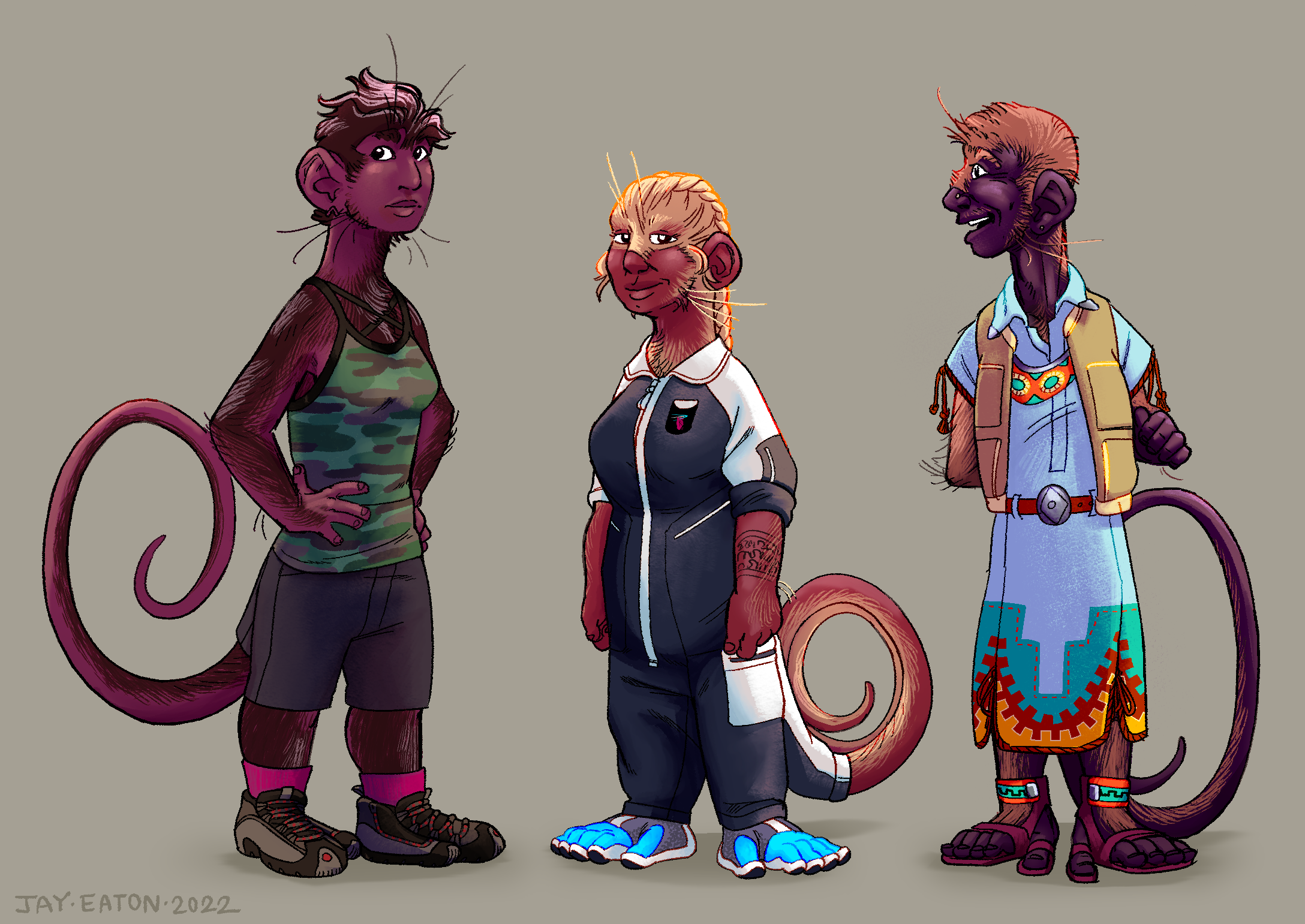
Average adult height (bipedal): 110cm
Average adult weight: 28 kg
Tailed spacers are the oldest successful clade of GMH, and are also known as tailers ("spacer" being a generic term for a person who doesn’t live on a planet). In modern day RttS there are about 2 billion living tailed spacers, and they’re the most common kind of claded GMH, though unique GMH outnumber them. Tailers are generally very gregarious and co-communicative, many living in tight communities onboard space stations. The largest ground-based community of tailers is on Luna, where they outnumber typ humans 20 to 1.
They were engineered a couple hundred years ago as part of a Martian vanity project seeking to create the ‘ideal’ human worker for life in micro/low gravity environments, and start populating the outer solar system for Jovian hydrogen mining. Their older English name is “Simians,” which is not considered PC any more… (Generally, referring to GMH as the non-human animal they most closely resemble is considered rude. Do not drop the ‘girl’ in ‘catgirl’ unless you are looking for a fight).
The primary pigment in their skin is selenomelanin, a pheomelanin (reddish pigment) derivative that’s effective at blocking most forms of low level cosmic radiation, which can increase cancer risks with long term exposure. It expresses much more uniformly over their body than melanin in a typ human, and can even be found lining their organs. Their skin tone ranges from dark red to purple-brown to near-black depending on the amount of eumelanin (black-brown) they have in addition to selenomelanin; and their hair and fur ranges in color between strawberry blond to red to black. Tailed spacers also have genes that help prevent muscle and bone density loss from life in microgravity… but, modern gene therapy regimens have made it so that most typ humans, especially in space-dwelling polities, also have these genes.
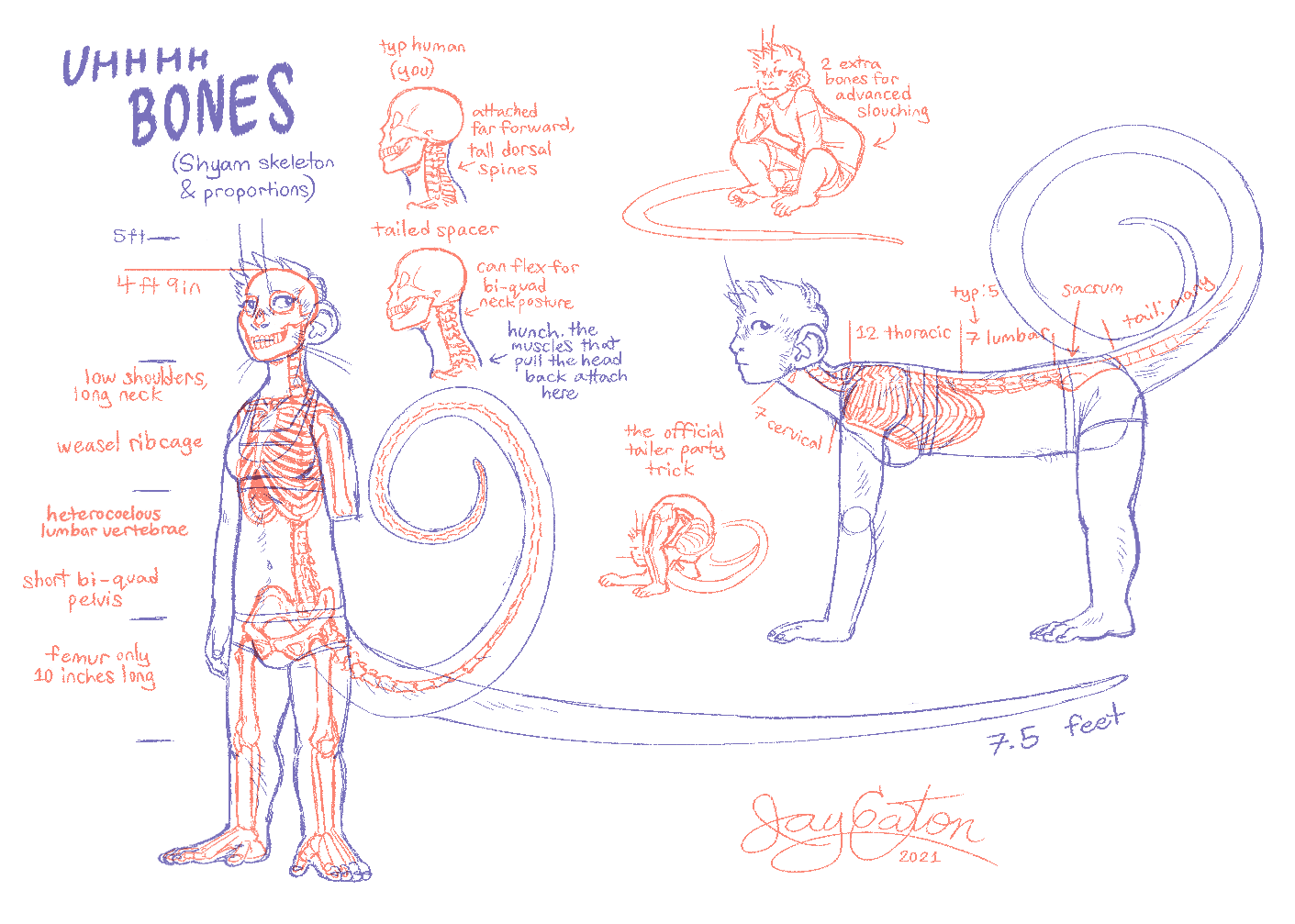
Much of their body has been altered for their intended microgravity lifestyle. Tailed spacers have a bi-quad bauplan, hyperflexible lumbar spine, thumbed feet, and a muscular prehensile tail for microgravity maneuverability. Moving through spaces in microgravity is usually done head-first, which is easier for bi-quads. The tail and feet allow them to form a stable tripod grip on surfaces, and their flexible spine allows them a huge range of access for their arms and upper body while gripping to a surface. Their supraorbital, genal, and carpal whiskers give them a greater spatial awareness in cramped quarters and detect airflow in spacecraft compartments. Their diminutive height means less fuel mass needed to push them through space, less food and water weight needed to sustain them, and less room needed on spacecraft to keep them sane. Tailed spacers are also much more efficient at retaining water than typ humans (they have very concentrated urine) and their metabolism adjusts based on food intake, so the less food they eat the more they slow down. There is a breaking point where they don’t have enough energy to move and go into torpor (or starve) but overall they can get away with eating much less than a WT human while remaining longterm healthy and functional.
Although they were engineered to maintain muscle and bone density appropriate for 1g while living in microgravity, their shape is still pretty terribly optimized for living a year or more under gravity. Bipedal movement puts strain on their lumbar spine and feet, which can’t deal with constant downward pressure like a typ human’s; and quadrupedal movement puts strain on their wrists and shoulders, which aren’t that different from a typ human’s. Walking on all fours is much faster and efficient for them under gravity because of their long flexible lumbar spine and short legs, but their small size makes it risky in crowded urban spaces.
Tailer GMH in general don’t have great genes for lower facial hair, despite being so hirsute everywhere else. You will find a few of them with thin beards and mustaches though. Their body fur patterns often vary wildly between individuals, but it tends to be thicker where typ human body hair is thicker (backs of legs and arms, along the spine and ventral midline).
Tailed spacers are genetically unisex, having a uterus and internal gonads that can produce both eggs and sperm. Click here to see an illustrated diagram of their reproductive system. The original reasoning was that they would be much more genetically stable at smaller population sizes– tailers were engineered before first contact with bug ferrets and the introduction of wormhole FTL, when Martian political powers were throwing around the idea of multi-generational interstellar ships. Most tailed spacers identify as some kind of non-binary gender, but it’s not an overwhelming majority… some, like Shyam, choose a binary gender, and others still might choose to transition away from unisex. They also have a much higher rate of polyamory than typ humans, but it's unclear if it's an innate difference or a cultural one.
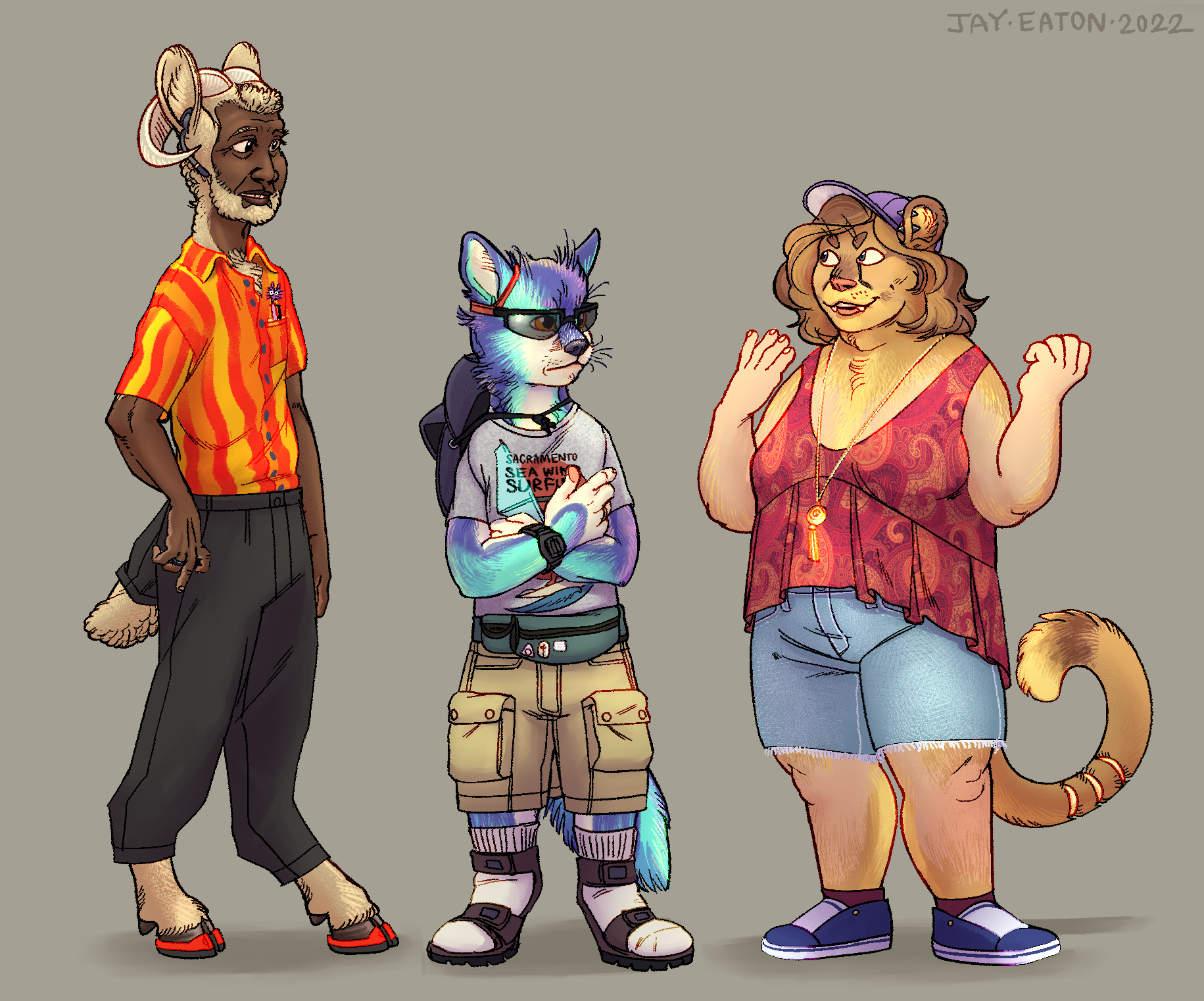
An extremely diverse clade of genetically modified humans, not all androtherians are equally compatible. In the medical community, they are usually divided into several subgroups based on medical care requirements, cross-fertility, and natal lab origin. Most mammalian modifications on the catgirl to anthro scale fall under this umbrella, including Gillie.
The majority of androtherians were modified for aesthetic purposes, though some have augmented senses (usually smell and hearing) or physically excel at running, weightlifting, or other athletic activities. They were first popularized in pre-WW3 Martian-American culture and many of the larger subgroups can trace their lineage back a couple hundred years.
Modern natal labs, despite tighter regulations, still produce new androtherians on commission— most often for androtherian parents with out-group partners who want to have genetically similar children, but typ parents may also commission GMH children. Sometimes it’s because they are looking to flaunt their wealth or personal taste, but many parents going to a natal lab for unrelated reasons (infertility, heritable disorders, not being able to gestate a child) are incentivized by corporate benefits and scholarships to take the more expensive designer option. New androtherians commissioned by typ parents tend to have a different relationship with their identity than those commissioned by androtherian parents.

Average adult height: 140cm
Average adult weight: 30 kg
The recent project of a Chinese genetics firm working with city planners on an idealistic layered city project, where housing availability on the ground can be maximized by designing a city with a "canopy" layer that is most accessible and easily populated by lightweight flying humans. It was also a show of progress because the Magpie Bridge clade are both extremely humanoid and upright, and extremely efficient fliers. Previous versions of winged GMH tended to look human at the expense of flight or be good fliers at the expense of an upright humanoid body plan. The starting population of the clade was about 60 individual corvid-human mixes with a physiological emphasis on fast and efficient flight. Min was the first born of the second generation.
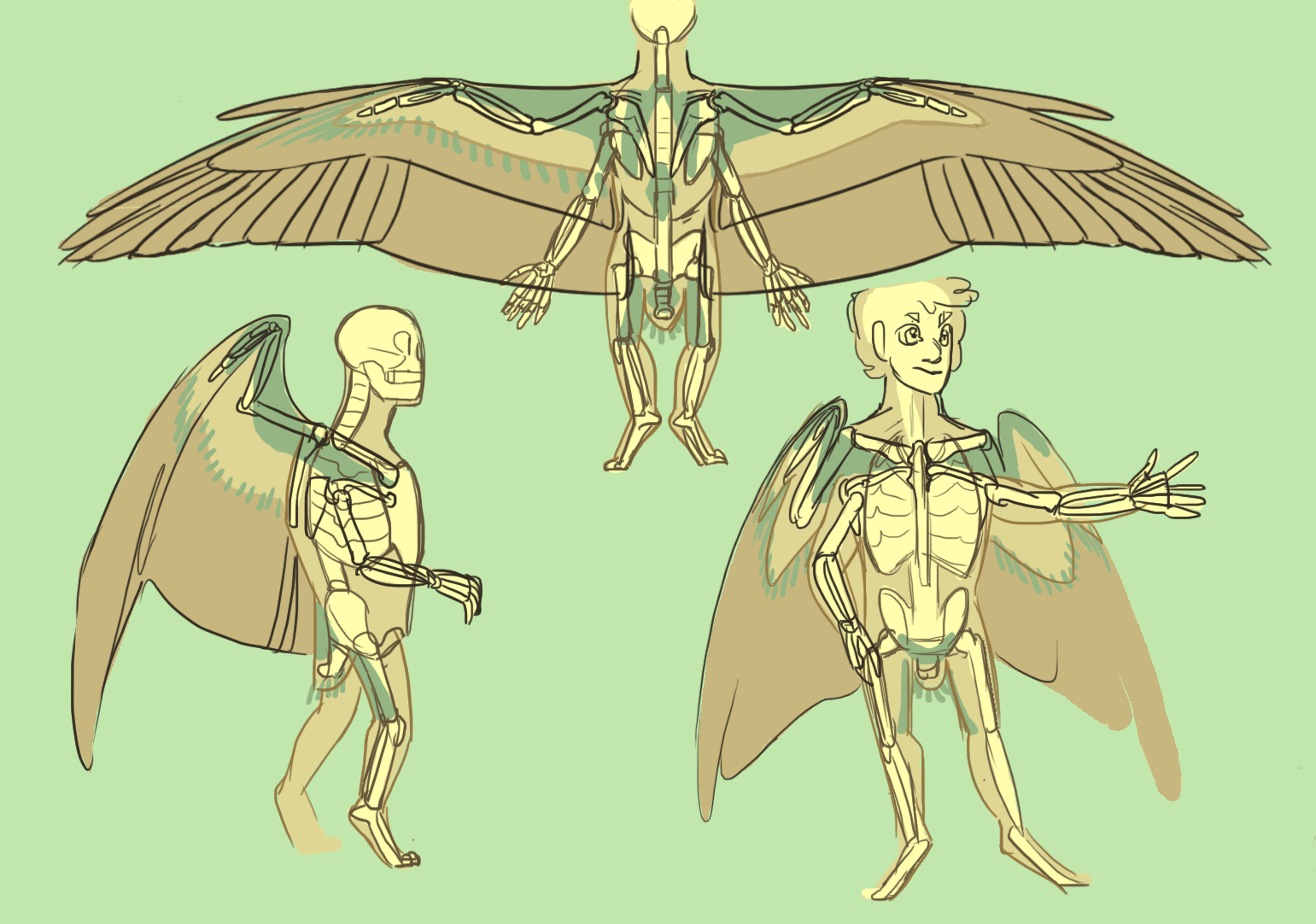
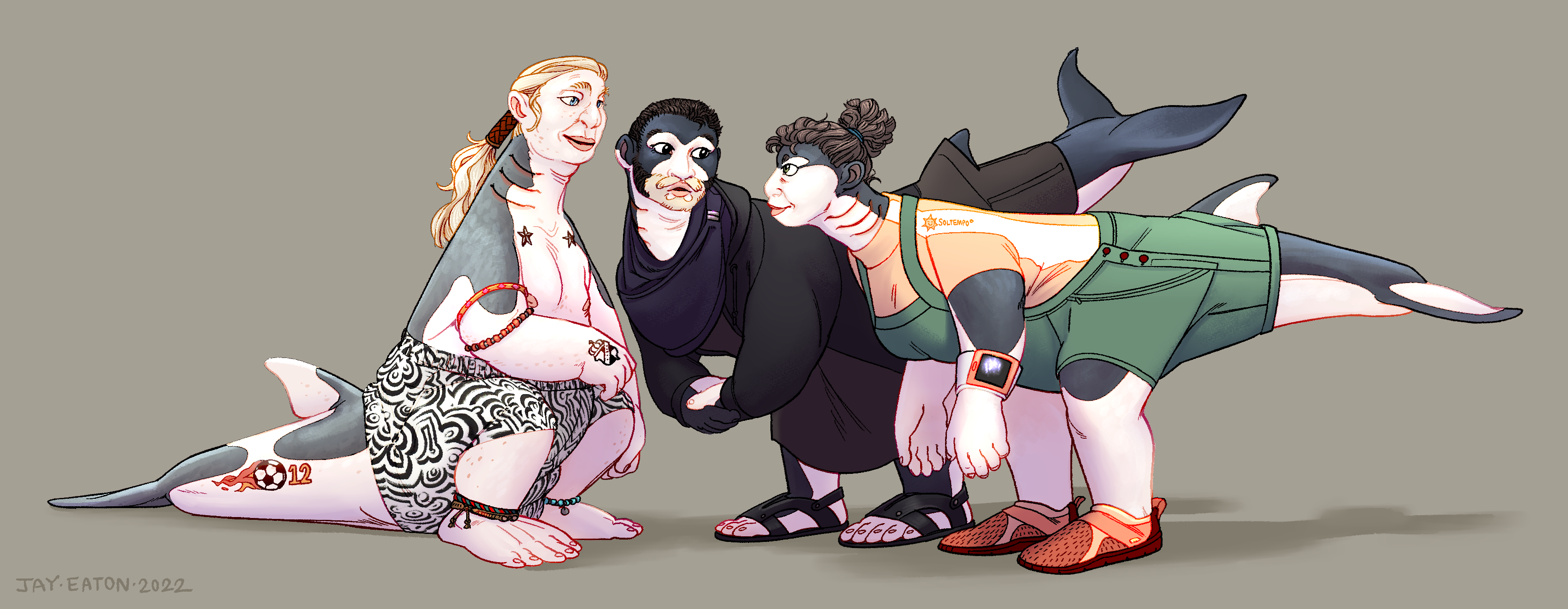
Average adult height (at hip): 110cm
Average adult body length: 210cm
Average adult weight: 150 kg
An aquatic clade of genetically modified humans designed for exploration and reconnaissance in flooded regions of Earth, funded by the Republic of Brazil after the 2144 Climate Reparation Summit. This had mixed reception politically— supporters were eager to see gene technology used for post-WW3 recovery, and critics weren’t convinced that increased regulation on the natal lab industry solved the inherent ethical issues with creating a new human species.
Cetassereio are much more common on Earth than in space colonies like Jovia, and have settled some regions that typ humans can’t tolerate without mechanical cooling due to extreme heat and humidity. Although they have gills, Cetties cannot breathe underwater indefinitely due to the high caloric demands of their human brain and mammalian physiology. In well-oxygenated cold water, they can submerge for maximum of about 4 hours.
Unique GMH are technically non-claded, or each belong to a clade of one. They are generally not reproductively compatible with any other humans, though they can still have genetically similar children with a partner through a natal lab. Mammalian traits are the most common mix-ins for aesthetic alterations, as the genetics are the easiest to mesh together. Guiomar is an example of a unique GMH.
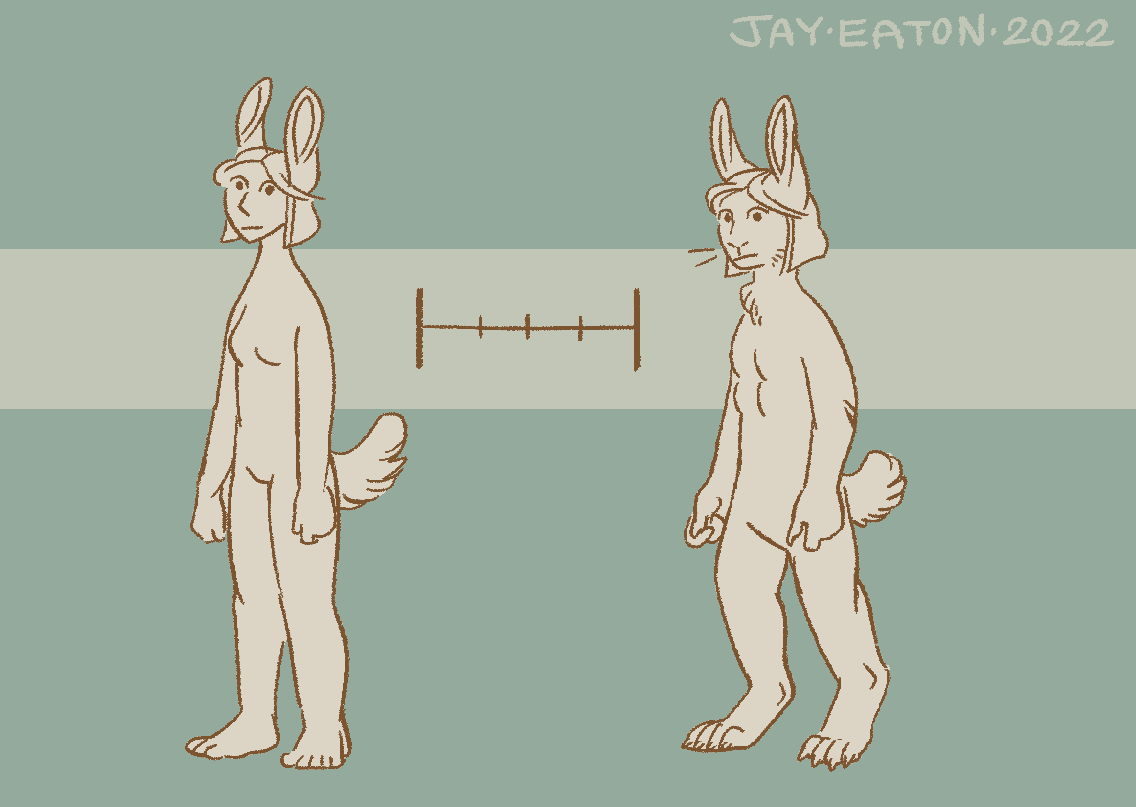
Catgirl is a broad classification that ironically includes non-cats and non-girls. Generally, however, a catgirl-type GMH appears typ human other than their ears and tail. Specific individuals or clade projects are usually referred to by the animal they resemble, e.g. “dog person/boy/girl,” “bunny person/boy/girl”. GMH are considered anthros when they remain bipedal and generally human shaped, but the non-humanoid traits are more extensive, including full coats of fur or scales, horns, non-humanoid feet, and digitigrade legs.
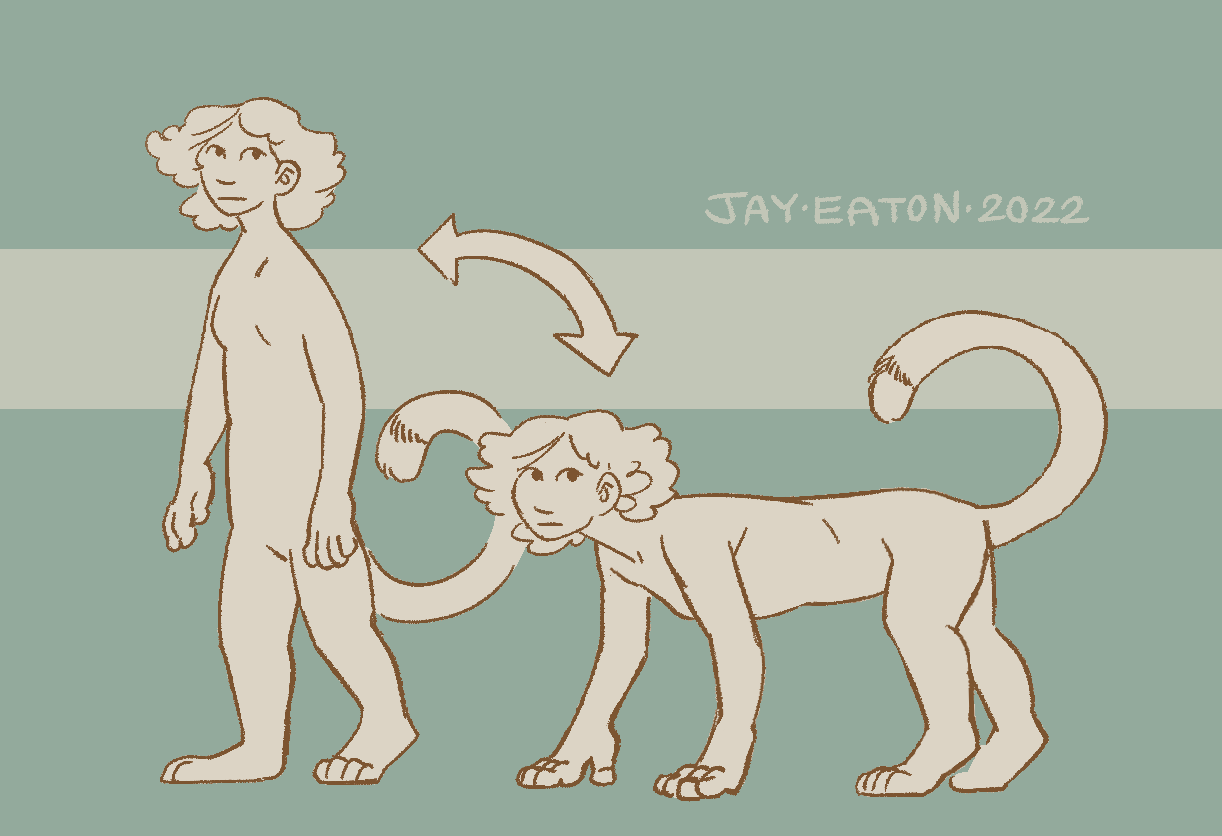
Bi-quad GMH can walk on either two or four legs. Their body plan usually has arms and legs of roughly the same length, long torsos, and long necks with cervical attachment further back on the skull than a typ human. They are either plantigrade (like tailed spacer GMH), knuckle walkers, digitigrade, or a combination thereof. Digitigrade hands result in a faster quadrupedal run, but reduced dexterity. The term sphinx mostly refers to cat based bi-quads.
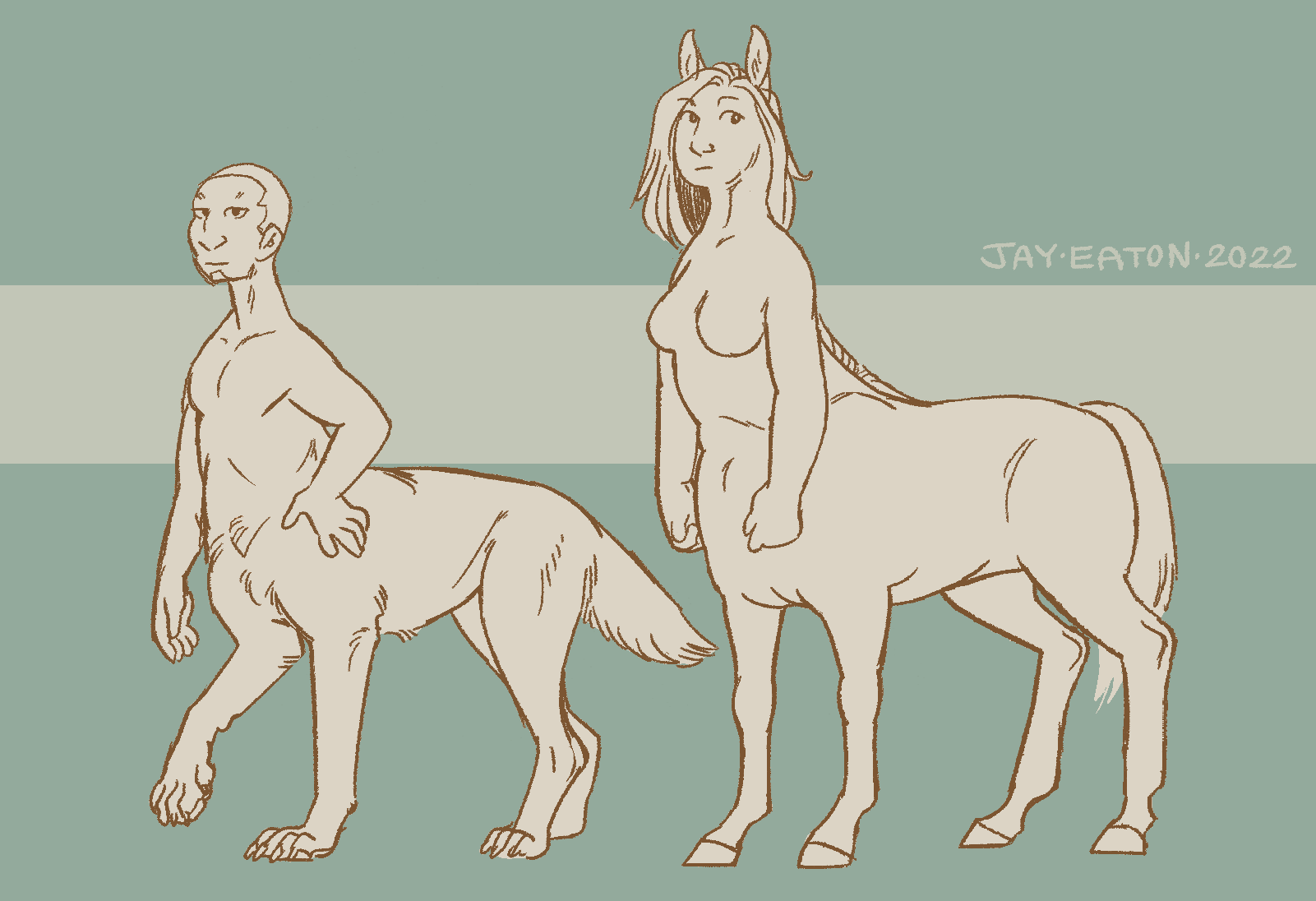
Taurs are hexapodal humans who generally stand and walk on their rear four limbs. GMH taurs are not to be confused with centaur aliens, though horse based GMH taurs are frequently also referred to as centaurs, just to keep things confusing.
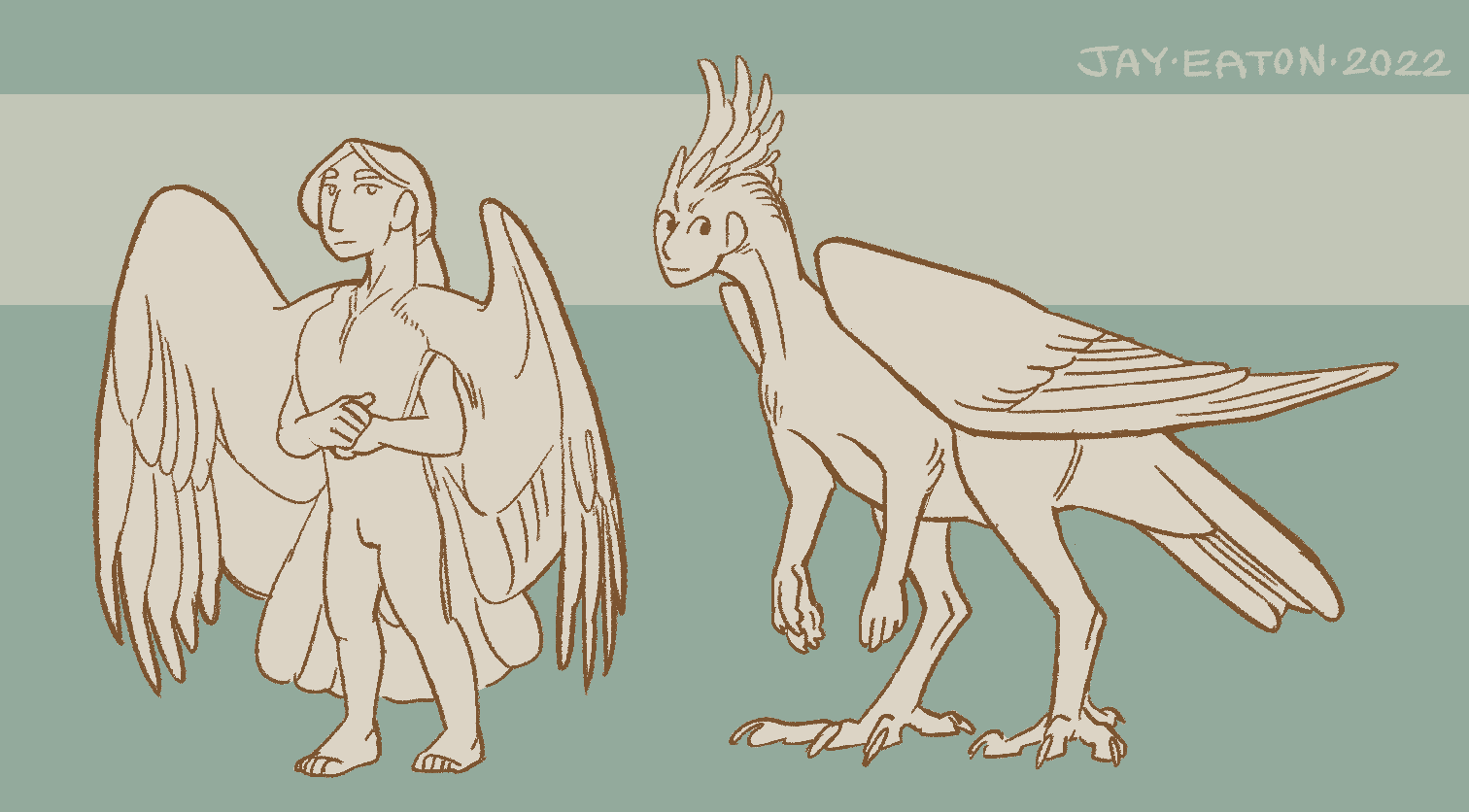
Winged GMH are hexapods with a pair of limbs they can use to fly. Due to the strenuous demands of flight, their proportions have some of the most extreme changes of any GMH. They are generally bipedal, small in stature with thin legs and barrel chests, and have either an upright stance or raptorial stance. Raptorial winged GMH are generally the better fliers of the two, and better at taking off from flat ground.
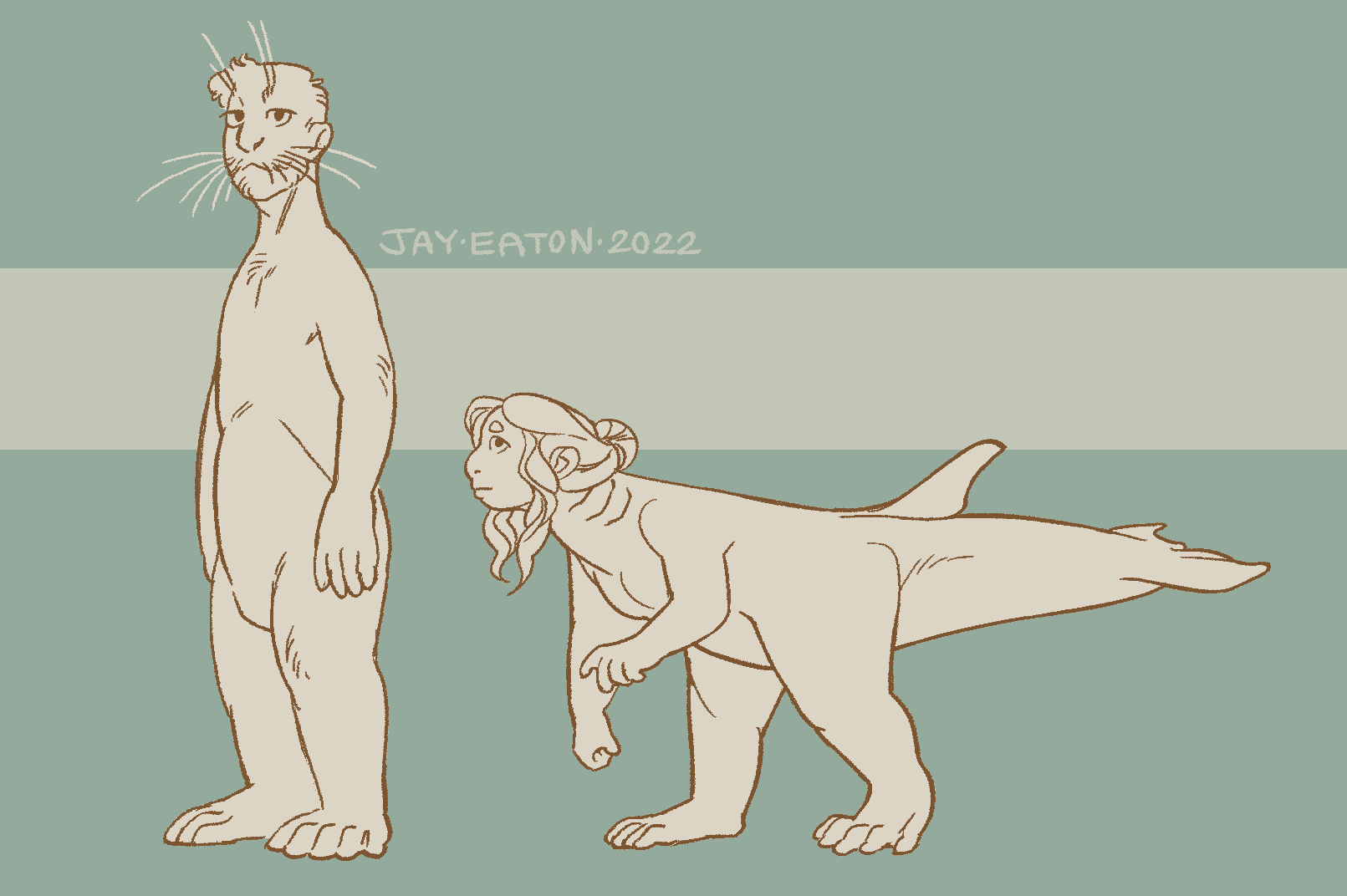
Mermaids are GMH with a bauplan optimized for aquatic movement, and many have gills under the jaw or on the neck. Tailed mermaids tend to have short rear limbs and heavy muscular tails, which gives them a raptorial stance. Mermaids with a short tail or no tail (sometimes called selkies) have wide paddle-like feet and are usually bi-quads.
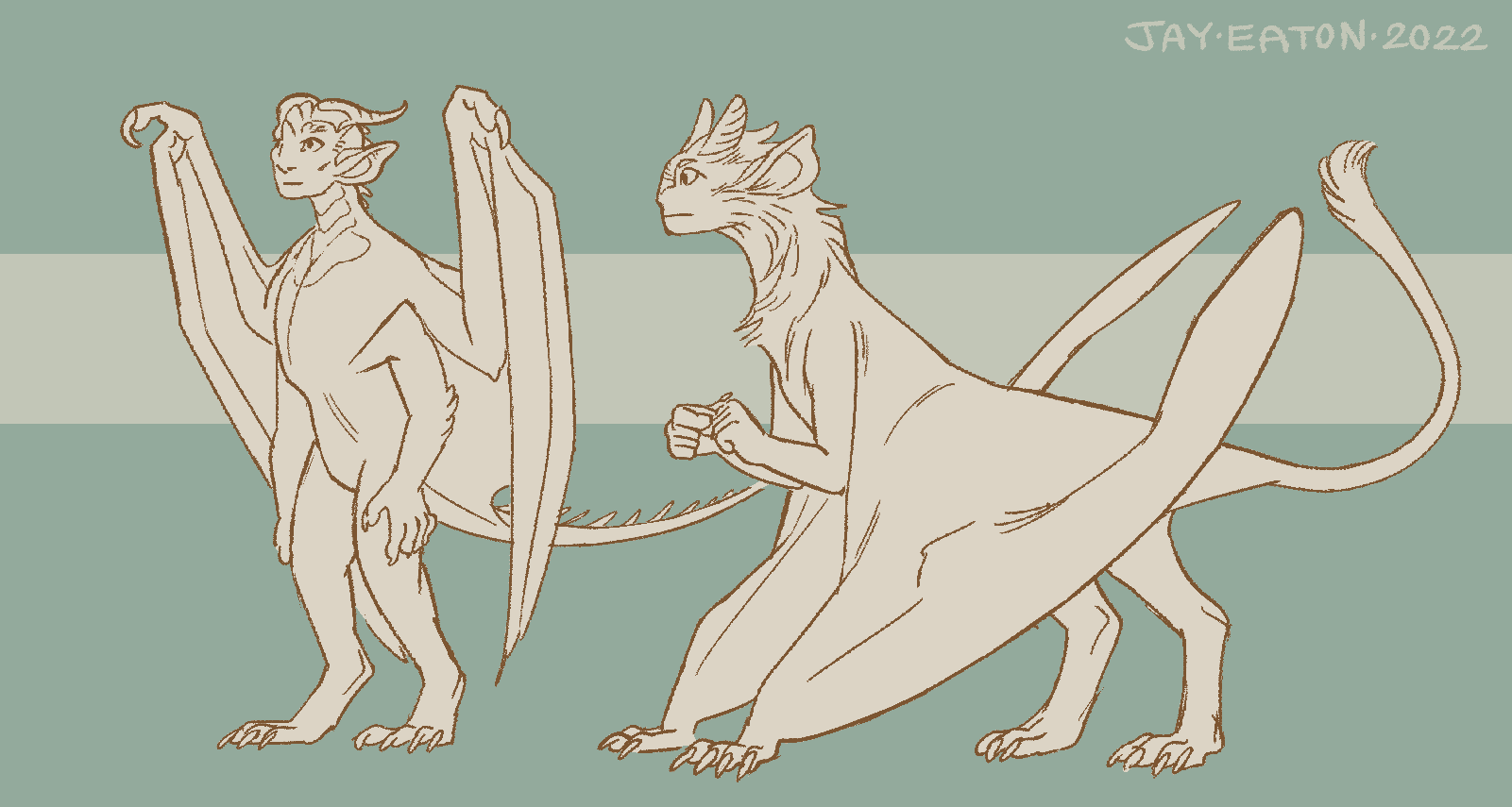
Dragons are a loose group of GMH who generally have scales, horns, and reptilian tails. Some are anthros, some are bi-quad, some are taurs, and many are winged. Dragon wings usually have a patagium rather than feathers, which results in some unique challenges for clothing design.